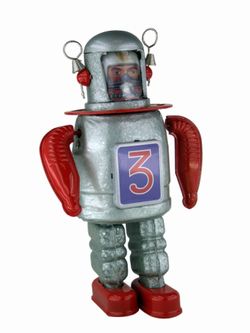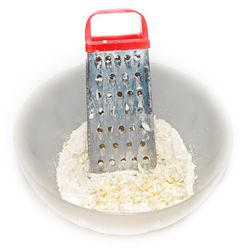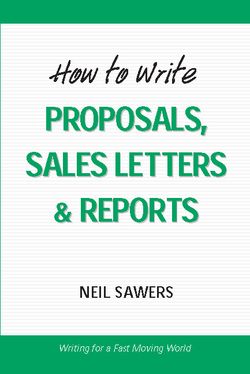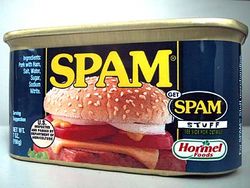November 26, 2010
 I began my career as a copywriter and at the core, it's still how I think of myself. I love creating emotional responses, telling stories and drawing pictures with words. (This could be due to the fact that I cannot draw them any other way!)
I began my career as a copywriter and at the core, it's still how I think of myself. I love creating emotional responses, telling stories and drawing pictures with words. (This could be due to the fact that I cannot draw them any other way!)
But I've always believed that many marketing writers have missed the point. We're not supposed to be so clever and so fancy that we confuse people. We're not supposed to use inside jargon or bloated words (empower, paradigm, etc.) that have been so badly overused that they are meaningless.
We are supposed to talk like regular human beings.
Sure, you can be a remarkable storyteller like the folks at J. Peterman's catalog or fire people up like Steve Farber can — but you do it in language they can understand and relate to.
Check out this black Friday sales e-mail from the StoryPeople organization, located in my home state of Iowa. (click on the link to see their cool building!)
Sure, they're announcing a sale but listen to how human they sound.
Subject: Happy Bright Friday! Yippee! (because calling it Black Friday is just too bleak…)
OK, we were hanging out at the studio this morning & for very good reasons, we started a game of Let's Pretend. Why? you may ask…
Because, we would answer, given our usual balmy Iowa November weather, outside there was ice coming down in sheets the size of billboards. We HAD to pretend that it was all a bad dream & that it was happening SOMEWHERE ELSE. Somewhere else where we weren't. Like Narnia, or the South Pole, or someplace like that, where they like ice coming down in sheets.
It was fun for a while, but the ice didn't want to play along. Boo, ice! So, we decided to play something else instead. Ben suggested a game of Rename The Day After Thanksgiving. Because really, who likes the name Black Friday? We don't know who called it that in the first place, but obviously, they were having a really bad day.
Once we got started, of course, we got all happy & chirpy again (as long as no one looked outside). After much lively discussion & laughter, we voted to call it Bright Friday instead.
(But don't worry. We're not like the government, where even if it's a stupid idea, you're stuck with it. We think of it as a temporary name until someone comes up with something better. To be honest, we didn't have a lot to work with. It was one of two suggestions. The other was Rainbows & Unicorns Friday. See? Bright Friday doesn't sound so bad after all, does it?)
Because it seems like just the kind of day that demands a celebration, we're doing a StoryPeople special in honor of Bright Friday. Woo hoo! For the entire month from now until, well, a month from now. (We first thought it'd make sense to keep with the whole 30 days in a month theme & give you 30% off of all purchases of 30, or more, things. But that didn't seem all that bright, being that it was Bright Friday & all…)
So, we went with 30% off of all purchases of 3, or more, of everything. (Ok, except for individual greeting cards, furniture, holiday ornaments & our create-your-own products. Because we're swamped right now & that would push us completely over the edge. But that still leaves tons more stuff & all the rest of it is fair game.) So pick any three things- a sculpture, a book, a print, you name it & we'll give you 30% off for 30 days. Hooray for Bright Friday…
Oh yeah, one more thing…
Don't forget that you have until November 29th to nominate your favorite Princess for the only-one-in-the-whole-world StoryPeople tiara. If you haven't heard yet, the tiara was done by Lynne the Jeweler who does all the StoryPeople holiday ornaments. (Which, by the way, are only guaranteed to arrive in time for the holidays if you order by November 29th.) So, if you haven't done it already, nominate your favorite Princess (since we're running out of time, be sure you send it via email to Annette@storypeople.com) by telling us who they are & why they should be crowned this year's StoryPeople Princess of the Known Universe. Heck, if you want to make it really easy, just add it to the comment at the end of your order when you stock up on this year's limited edition StoryPeople holiday ornaments… 🙂
No matter what, make sure you get everything in by November 29th (because, no kidding, this once-in-a-lifetime chance at the tiara ends then. We're putting our foot down. Even with Bright Friday dancing into sight, ice is still coming down in sheets. So, don't even think about messing with us on this… 🙂
We look forward to seeing you at StoryPeople.com soon (& even if we don't, let us know how your Bright Friday goes. We have a feeling with a name like that, it's going to be fabulous…)
With love,
The Crew at StoryPeople
Did they make their point? Sure… they're having a sale. But they did it in a way that sounds quite human. And also very true to their brand. Can you imagine seeing an ad that says "because we're swamped right now & that would push us completely over the edge?" I'd like the company that had the courage to do it.
How about you? Could you copy use a little humanization?
By the way… thanks to reader Rebecca (love that Rebecca!) for sharing the e-mail copy. I'd never h eard of the StoryPeople before, despite their Iowa location.
But, I see that they're selling a book by Twitter sensation Tim Siedell (twitter name: BadBanana) who I knew way before he was twitter funny and he guest blogged here while I vacationed. Tim and I share a love of branding, Disney and David Ogilvy. He blogs too. He is a twisted sister of funny, so check out the book.
More










![Reblog this post [with Zemanta]](http://img.zemanta.com/reblog_e.png?x-id=ae61487d-fb0b-41af-a657-168328b415f5)

![Reblog this post [with Zemanta]](http://img.zemanta.com/reblog_e.png?x-id=f96c1070-2d63-4aff-a8d9-db78882da644)

![Reblog this post [with Zemanta]](http://img.zemanta.com/reblog_e.png?x-id=74b3b106-20c9-4d7a-b8e6-b22380fe60b9)

![Reblog this post [with Zemanta]](http://img.zemanta.com/reblog_e.png?x-id=be8ed32a-f972-4522-b1af-f9c556bf01bf)

![Reblog this post [with Zemanta]](http://img.zemanta.com/reblog_e.png?x-id=bd433548-b1c4-457e-ba45-41e8bf2ec75d)